| Peugeot
505 1989 turbo engine N9TEA by
George Nunez
|
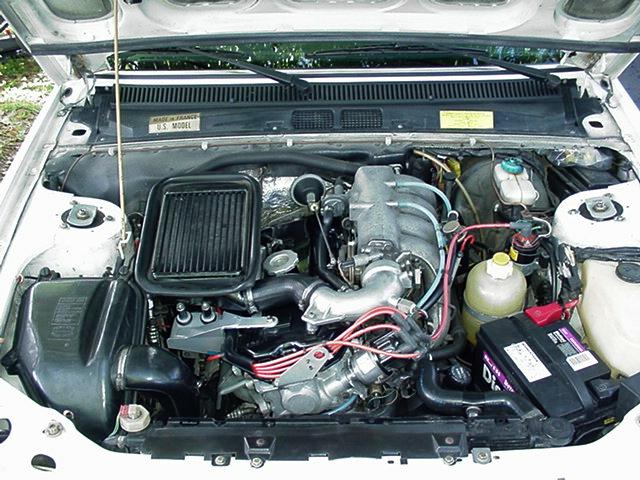 |
1989 N9TEA 2155cc wagon: 160hp DIN 205 lbft
sedan: 180 hp DIN 205 lbft
Difference in the ECU, wiring
harness, and possibly turbo between wagon and sedan, the
stock boost is ecu controlled to 11.6 psi.
Symptoms at 135,000 miles: bubbles and oil in the
cooling system.
The car was driven hard and the following mods:
- boost to 12.5 psi
- 300cc injectors (BMW 745)
- exhaust manifold ported
- oil cooler (505 TD)
- custom exhaust, one Magnaflow
- sedan ecu and wiring harness
- synthetics all around
|
 |
Reassembled. See the oil filter sandwich plate with
the two connections for hoses to an oil cooler.
Everything has been restored or replaced with new parts
and detailed. Distributor is timed
Block is Ford engine grey.
|
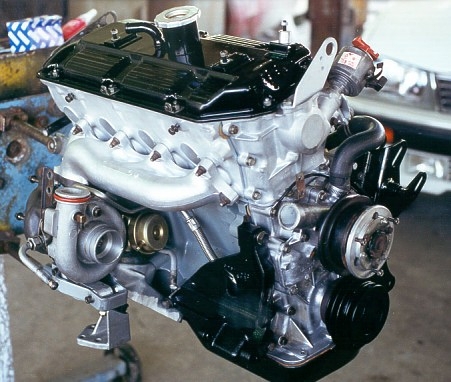 |
Exhaust side, manifold has been polished inside and
the outside painted with 2,000 deegree paint. It has held
up well after 50,000 miles |
 |
Rebuilt head from Ericson just installed, new timing
chain has to be slipped thru head gasket, a bit tricky.
The block was decked for flatness and cleaning of the
mating surface, the bore had a small ridge that was
removed and the pistons have new rings. Also replaced the
bearings and seals. Note the rear main are rope and NLA
but Jag XJ6 are the same. Cut with about .005"
protrusion. After 50,000 miles there are no leaks,
assembled following the factory manual, no short cuts.
|
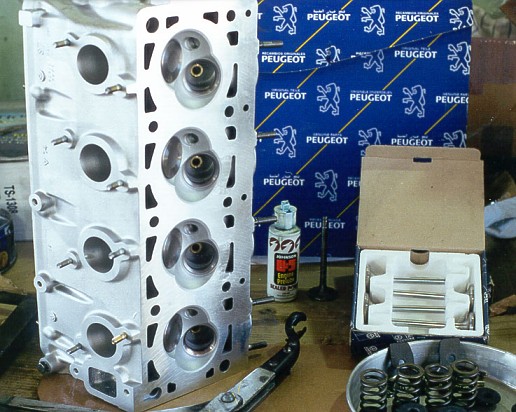 |
Installing new valves, intakes are in. There is a
half degree diference in the valve seat angles and the
new valves are not to be lapped. The old valves were in
excellent shape however. I used Sealed Power engine
assembly lube. |
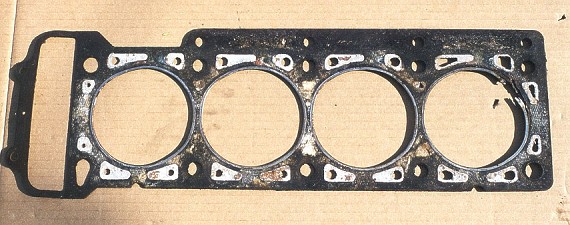 |
Typical area where 505 T head gaskets fail. Rear most
cyl (#1) exhaust side. The small circle is to highlight
the difference in the coolant holes between the front and
rear. The smaller are to promote more flow thru the rear.
May be marginal as it is, consider enlarging the rearmost
to the max. The one in the lower right of the circle
seems to have large amount of white telltale whereas the
upper hole is as large as possible.
|
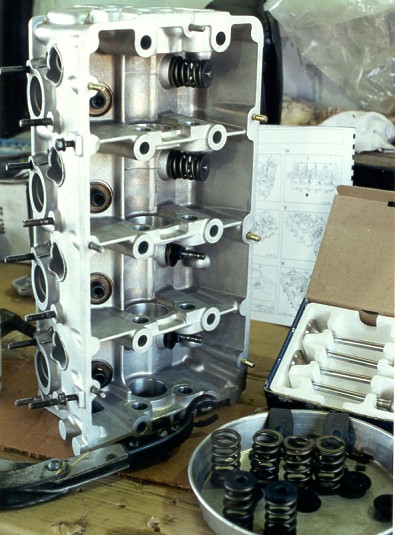 |
The upper side of the head. The cam oil trough is
seen. All the head studs must be transfered to the new
head. The exhaust studs are special heat/corrosion
resistant alloy and expensive. |






